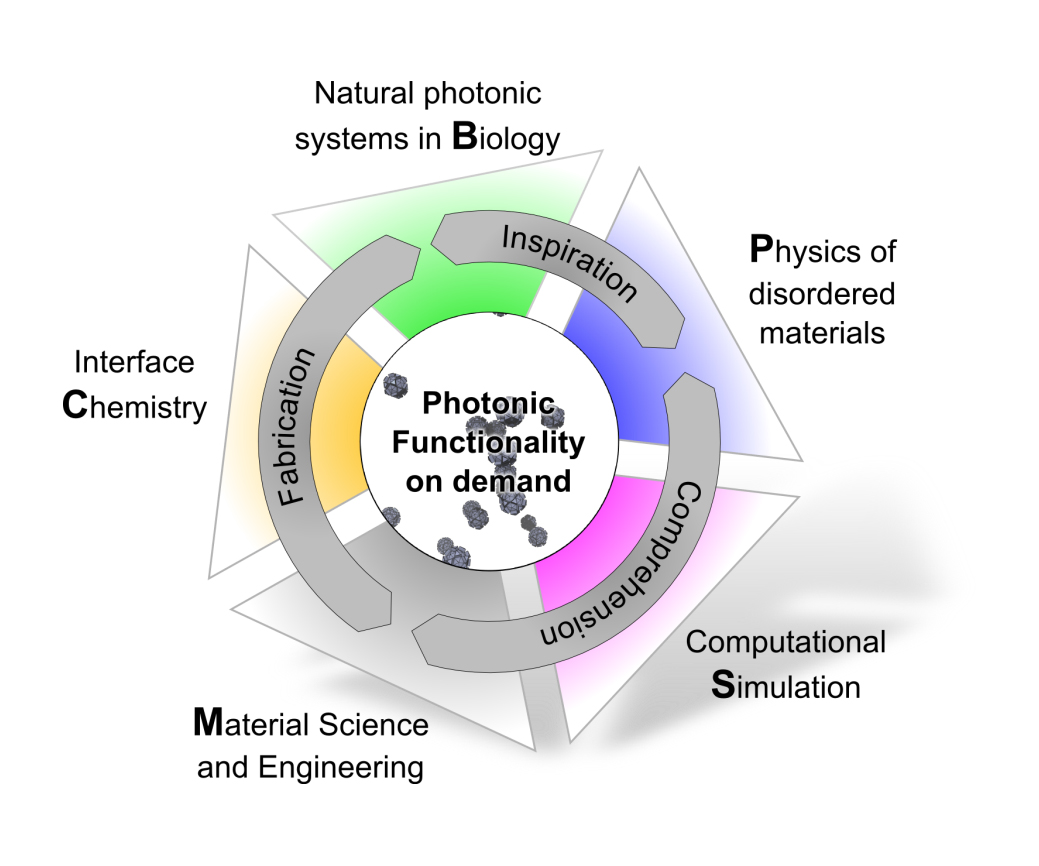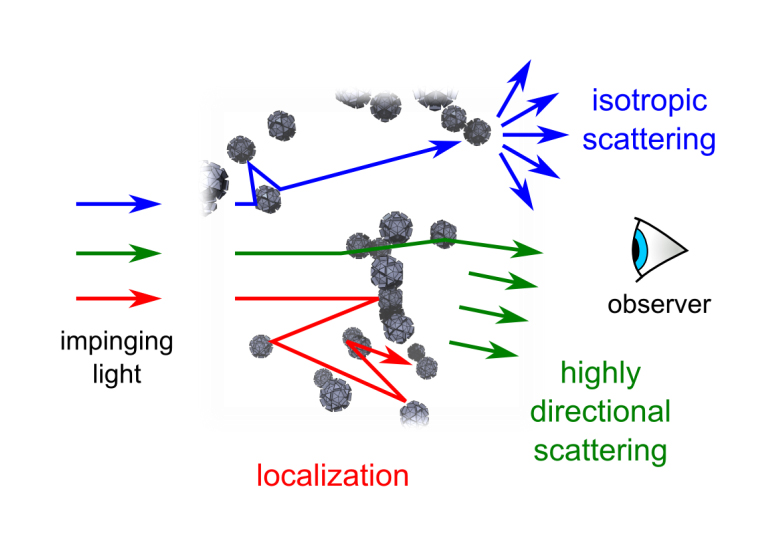Project Tailored Disorder
Welcome to the SPP 1839 „Tailored Disorder“
Everybody can handle order, but only a genius can master chaos.
- Albert Einstein -
This famous quote hasn’t rescued many children from tidying up their rooms, yet, it incorporates some truth. Recent research has shown that mastering disorder by tailoring some of the material properties can be beneficial for photonic applications in many respects:
“Spatial order and periodicity are often considered to be essential attributes in photonics, as many optical phenomena are attributable to these traits. Indeed, researchers strive to optimize regularity and eliminate disorder in many applications — just think of the careful arrangement of atoms in a crystal lattice, or the pitch of a photonic crystal or distributed Bragg reflector. In such cases, a higher achieved level of order (in principle) improves the performance of the device. Good control over order and periodicity therefore makes it possible to manipulate the phase and flow of coherent light in a powerful and reproducible fashion. As a result, it’s probably no surprise that for many years disorder and scattering were considered annoying and detrimental features that were best avoided or minimized.
However, in recent years the study of disorder and aperiodicity has become an increasingly active topic of research, with scientists learning how to harness optical media that are not intrinsically regular and can be strong random scatterers of light.”
from the editorial in Nature Photonics vol. 7, 2013, a focus issue on “disorder”
Three major effects can emerge in disordered media: (i) isotropic scattering, which is potentially useful for light sources without directed emission, (ii) highly directional scattering, which despite disorder minimizes demand towards material spatial accuracy (cost-effective) and (iii) localization, which slows down light or can even trap photons inside the disordered structure. This leads to cavity-like behavior useful for tailored interaction with secondary material effects, e.g. gain for lasing. All these effects can in addition be highly wavelength dependent and can be controlled by the many degrees of freedom inside a tailored disorder photonic material, promising a nearly unlimited freedom to tailor photonic responses.
The SPP 1839 is established by the Deutsche Forschungsgemeinschaft (DFG, German Research Foundation) since 2014. The program is designed for running up to six years.
The priority programme “Tailored Disorder - A science- and engineering-based approach to materials design for advanced photonic applications” (SPP 1839) is an effort to develop this novel field of research and foster new technologies to fabricate large scale materials with defined photonic properties based on deliberately and controlled disorder. Therefore, the SPP 1839 relies on the interplay of five research areas:
- Biology: Investigations of the composition and organization of biologically evolved photonic structures and their resulting photonic properties.
- Physics: Photon diffusion and scattering in disordered media and their collective effects.
- Theory and Computer Science: Modeling and simulation of disorder-based artificial or bio-genic photonic structures.
- Material Science: Fabrication of artificial or bio-mimetic structures that utilize disorder to define their functionality.
- Chemistry: Chemical functionalization or syntheses that facilitate control over the formation of disorder.


